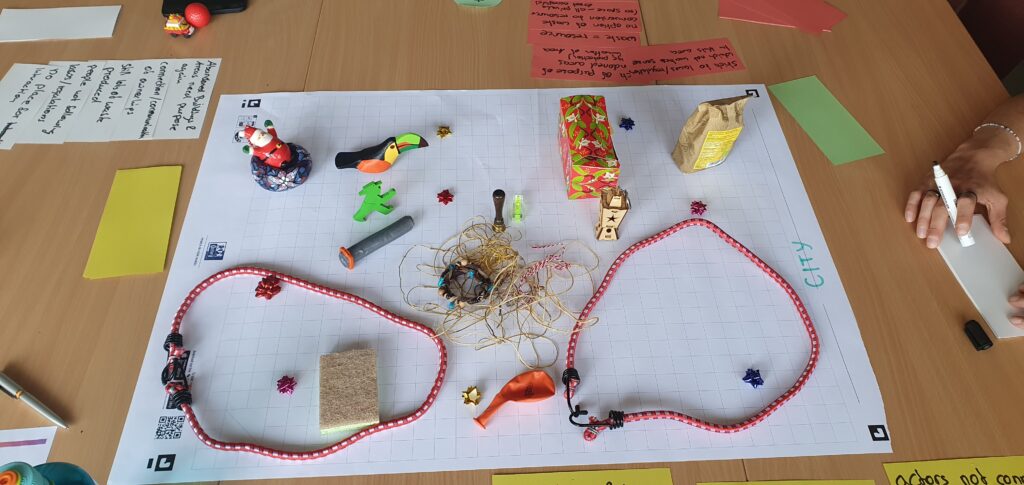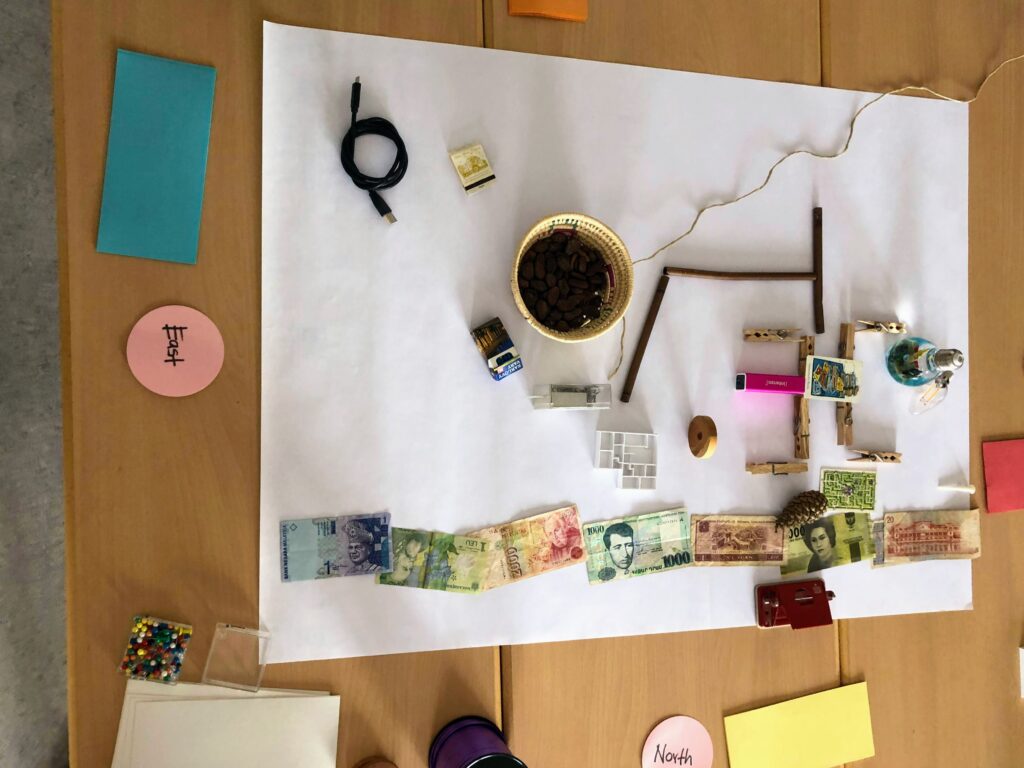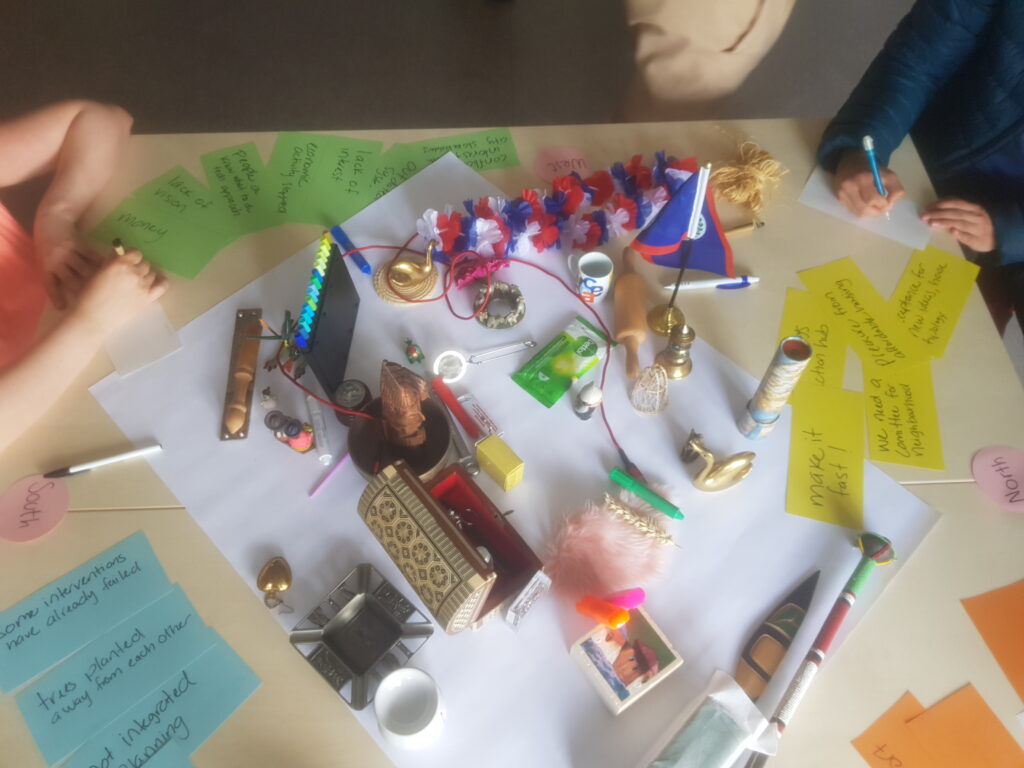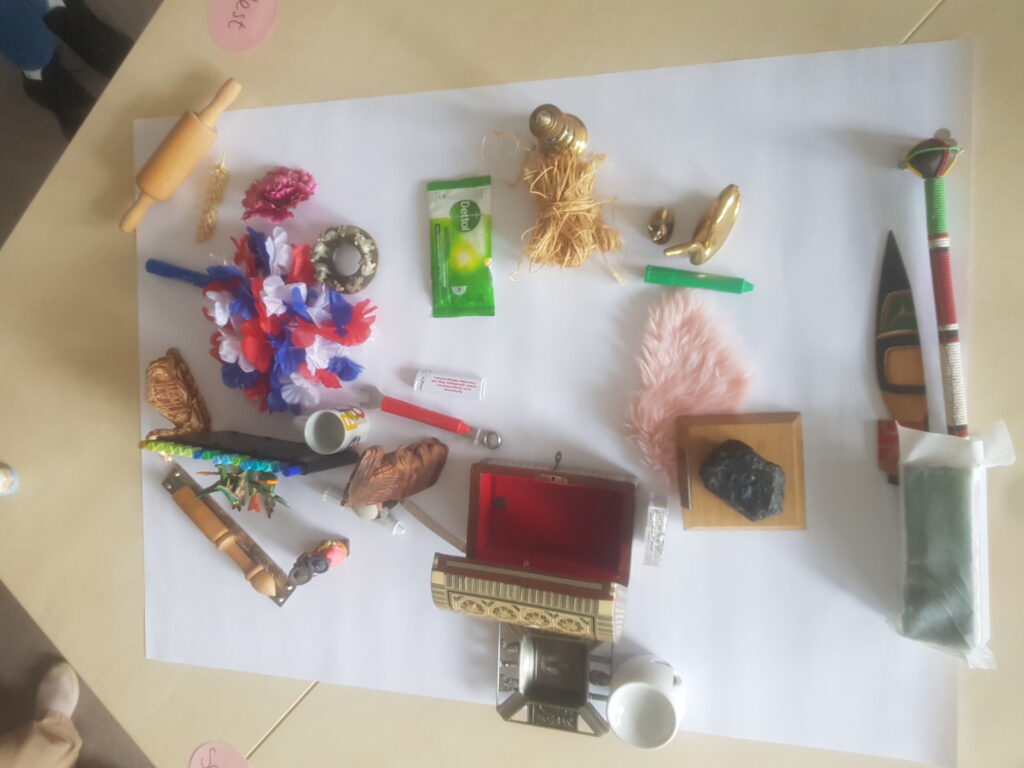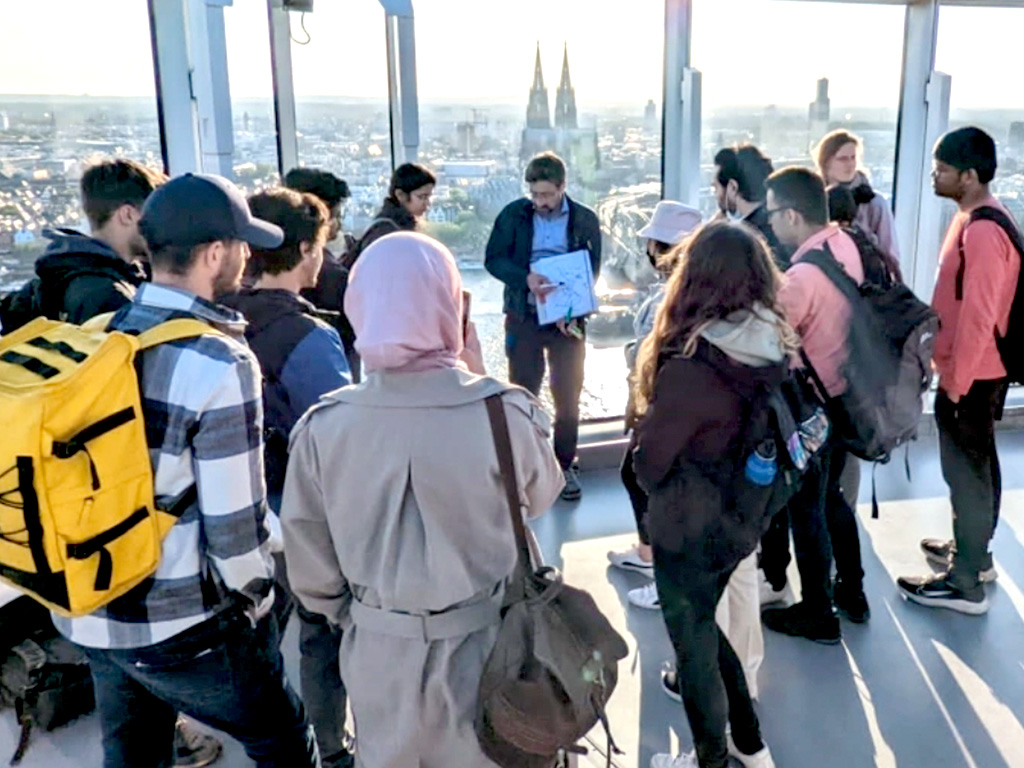
Resources Efficient Buildings and Quarters
(N5180)
SS 2021-22
Through a series of interventions guided by Laura Vetter, Lina, Osmar and Madigan, we developed competencies and skills that allow us to propose real solutions to complex problems in the module lectured by Prof. Johannes Hamhaber.
Resources Efficient Cities
SS 2023
A System thinking exercise was carried out as part of one of the activities of this lecture to identify the system components of the case study defined in Mülheim. According to the established approach, in which the city is understood as a system and thus the area of Mülheim as a delimited system, sector approaches were determined: water, energy, food, waste, and mobility. These sectors were lately adapted to the class priorities, two other sectors were added: blue and green infrastructure and biodiversity. The exercise was carried out using a tool from the Theory U framework; 3D Modelling or 3D Mapping was used to identify the elements and their relationships in each of the sectors, which are sub-systems within the Mülheim area.
The tool was implemented in groups in which the participants were not part of the system (they are not Mülheim residents and/or do not belong to the competent authorities of the individual sectors), but they had knowledge of the area and conducted a preliminary site investigation and a fieldtrip. Participants first recognized the system’s elements using their gained knowledge. They represented the relationships of the system’s components as a group and with objects, modeling the current situation of Mülheim in terms of the sectors energy, food, waste, and mobility. In this manner, the tool was implemented, and it was important to grasp both the components and their connections, to uncover and understand relationships and circumstances that maybe are not evident. This blind-spots can be glimpsed by rearranging the elements and considering different points of view and perspectives. It was possible to reach a certain level of understanding of the current status of the system and therefore to think of a possible future or better scenario. In this new model in which the elements are rearranged to improve the relationships, it is agreed among the participants how the links could be and what is necessary to improve.
